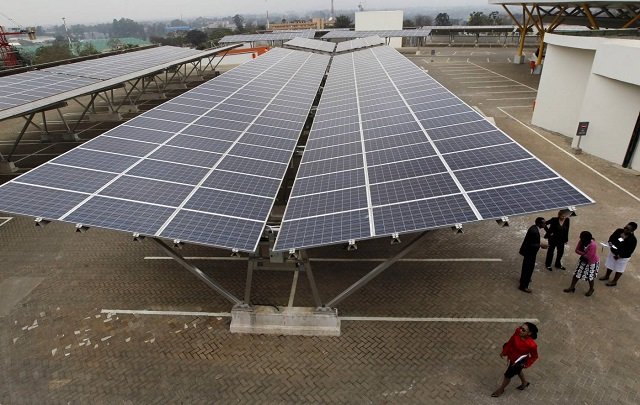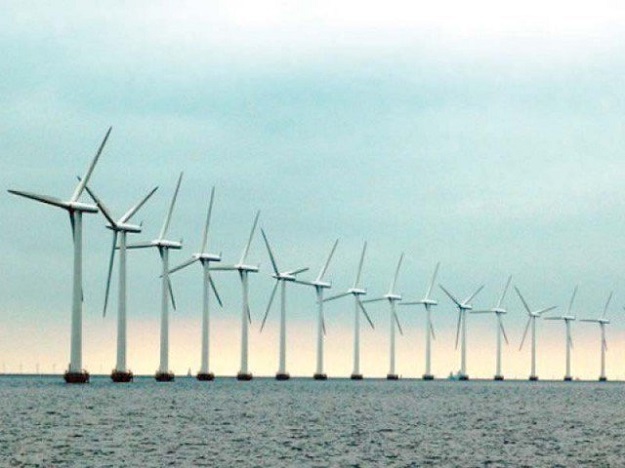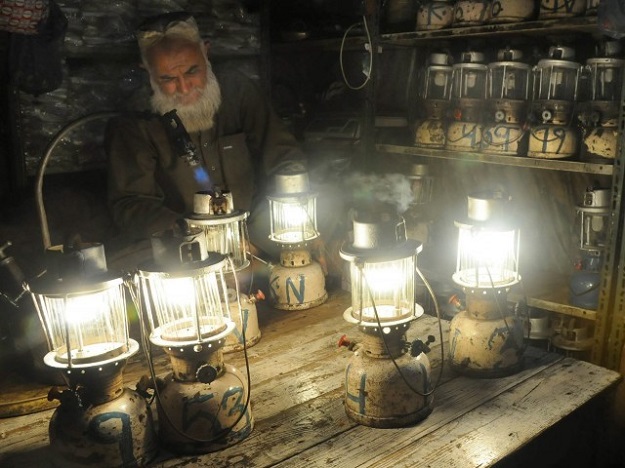
The number of people living without access to electricity in 2016 was a billion, or 13 per cent of the global population, with the vast majority in rural parts of sub-Saharan Africa and South Asia, new data released by the World Bank, the United Nations and other organisations showed.
Unless efforts to get power to hard-to-reach areas are ramped up, an estimated 674 million people - about 8 per cent of the world's population - will still live without electricity in 2030, they said in a report.
In 2016, 3 billion people - more than 40 per cent of the world's population - did not have access to clean fuels and technologies for cooking. Indoor air pollution from burning wood, dung, kerosene and other dirty fuels causes over 4 million deaths a year, with women and children at highest risk, the report said.
Major power breakdown after LNG-based plants undergo ‘testing’ in Punjab
"We must be more ambitious in harnessing the power of renewable energy to meet sustainable development and climate goals, and take more deliberate action to achieve a sustainable energy future," said Adnan Z Amin, director-general of the International Renewable Energy Agency, which worked on the report.
Among the global development goals now being pursued are universal access to electricity and clean cooking, as well as a doubling of the rate of improvement in energy efficiency, and a substantial increase in the share of renewables in the world's energy mix.
 Solar and wind have become far cheaper, allowing them to compete with conventional power sources such as coal. PHOTO: EXPRESS/ File
Solar and wind have become far cheaper, allowing them to compete with conventional power sources such as coal. PHOTO: EXPRESS/ FileThe Energy Progress Report, released at a two-day forum in Lisbon tackling how to meet the targets, highlighted that some countries - particularly in East Africa - have made big strides in getting electric power to their people in recent years.
Vivien Foster, global lead for energy economics with the World Bank, noted that in sub-Saharan Africa the number of people living without electricity had begun to fall for the first time in history. Previously, efforts to add power capacity were not able to keep up with population growth.
K-Electric expects lower tariff after LNG use in plants
"This has finally reversed, and we think it may be a turning point for electrification on the continent," Foster told reporters. Progress has been fuelled by a jump in off-grid solar power, driven by a rise in "pay-as-you-go" systems in countries such as Kenya and Tanzania, where users can make payments via mobile phones.
At least 30 million people around the world are benefiting from solar home systems, yet only about "a dozen" countries are embracing this revolution, World Bank experts said.
"If more countries would turn to this resource, we think electrification could accelerate even more rapidly," said Foster, noting the need for governments to develop clean energy markets and ensure good-quality products.
 The number of people living without access to electricity in 2016 was a billion, or 13 per cent of the global population. PHOTO: EXPRESS/ File.
The number of people living without access to electricity in 2016 was a billion, or 13 per cent of the global population. PHOTO: EXPRESS/ File.A shift towards cleaner cooking is lagging partly because it lacks ministries that champion the cause in many places, she added. Markets for modern cook stoves also remain undeveloped.
"We see it being systematically neglected by policy makers around the world," she said.
More For Less
Progress on boosting use of renewable energy also is set to fall short of the 2030 target, the report said. As of 2015, the world got 17.5 per cent of all energy that goes to end users, such as households, industry and agriculture, from renewables.
Solar and wind have become far cheaper, allowing them to compete with conventional power sources such as coal. But electricity accounted for only 20 per cent of energy consumption in 2015, said the report, flagging the need to speed up the transition to cleaner energy in transport and heating.
Energy efficiency is improving, with economic growth outpacing increases in energy use in all regions except for Western Asia from 2010-2015, the report said. That means countries - and particularly industries – are using less energy to produce more.
US to help set up first renewable energy institute
Transport and residential buildings have not shown the same rate of improvement in energy efficiency. Several wealthy developed countries such as Japan and the United States may have reached a peak in energy use, the report said, while among large developing countries, China and Indonesia are rapidly becoming more energy efficient.
"To meet 2030 targets, we must make every unit of energy work harder," said Rachel Kyte, CEO of Sustainable Energy for All, a body set up by the United Nations.




1730464033-0/BeFunky-collage-(12)1730464033-0-165x106.webp)

1732445375-0/Untitled-design-(9)1732445375-0-270x192.webp)


1732428810-0/Copy-of-Untitled-(3)1732428810-0-270x192.webp)
1732425487-0/BeFunk_§_]__-(42)1732425487-0.jpg)






COMMENTS
Comments are moderated and generally will be posted if they are on-topic and not abusive.
For more information, please see our Comments FAQ